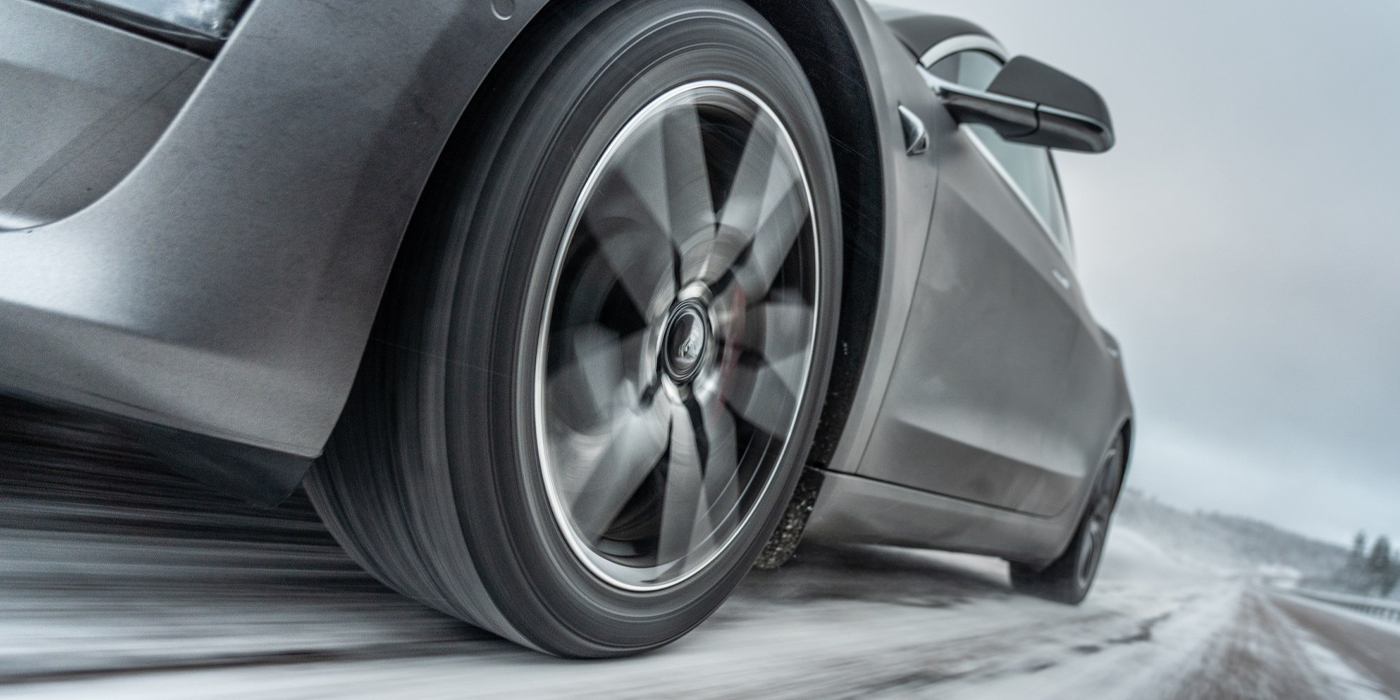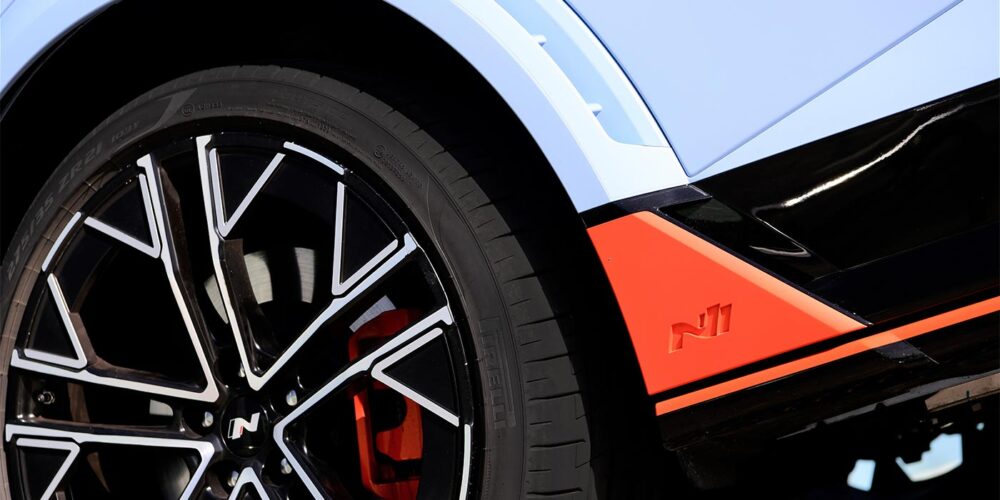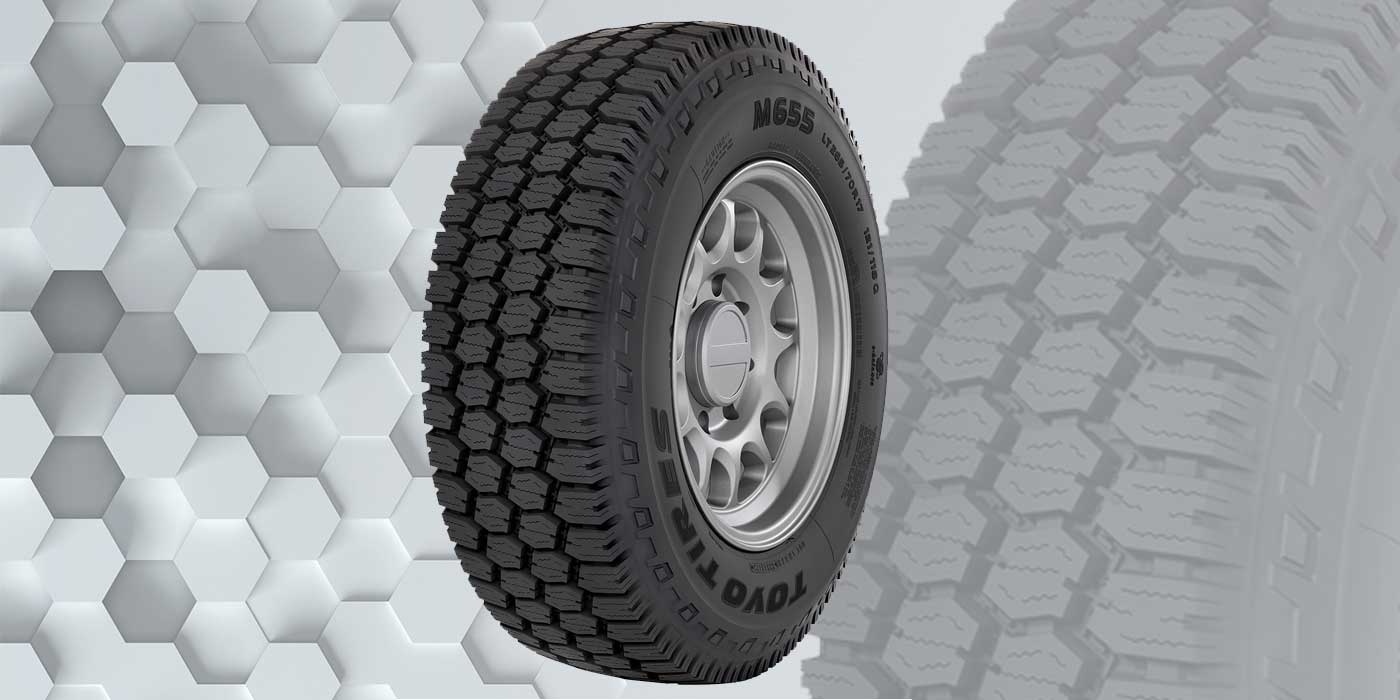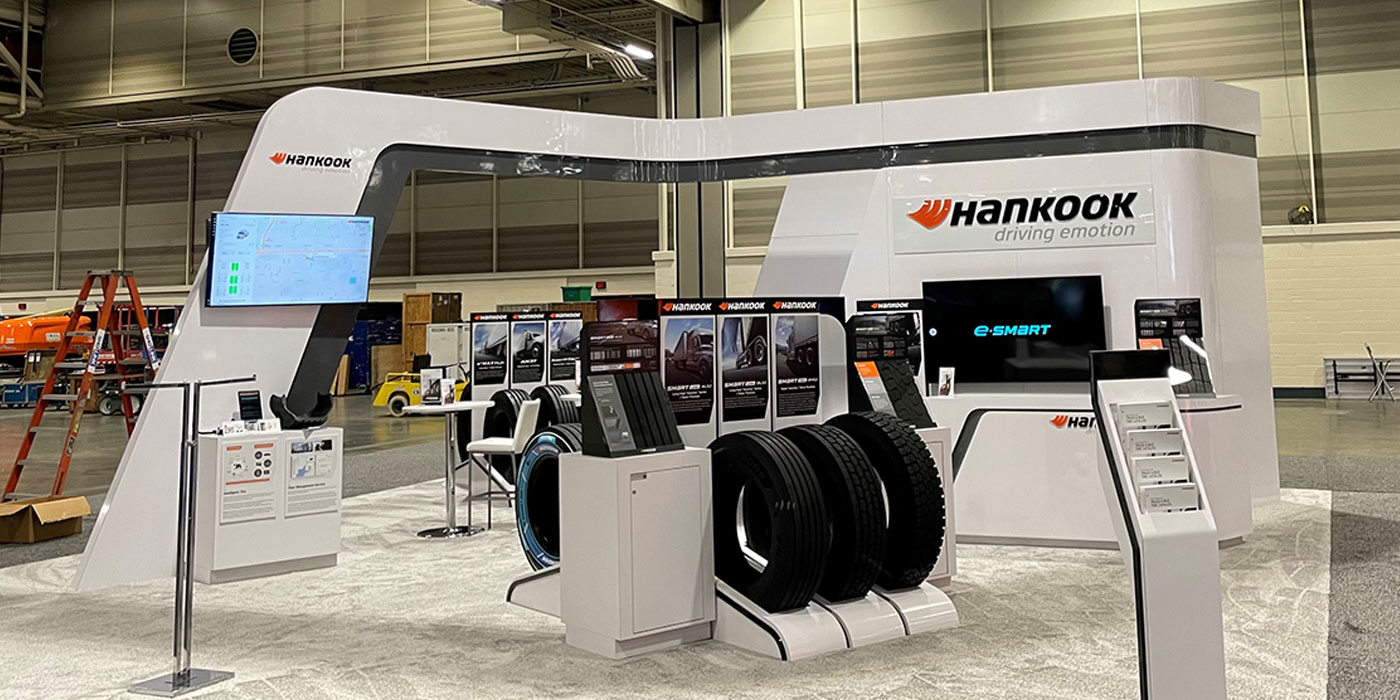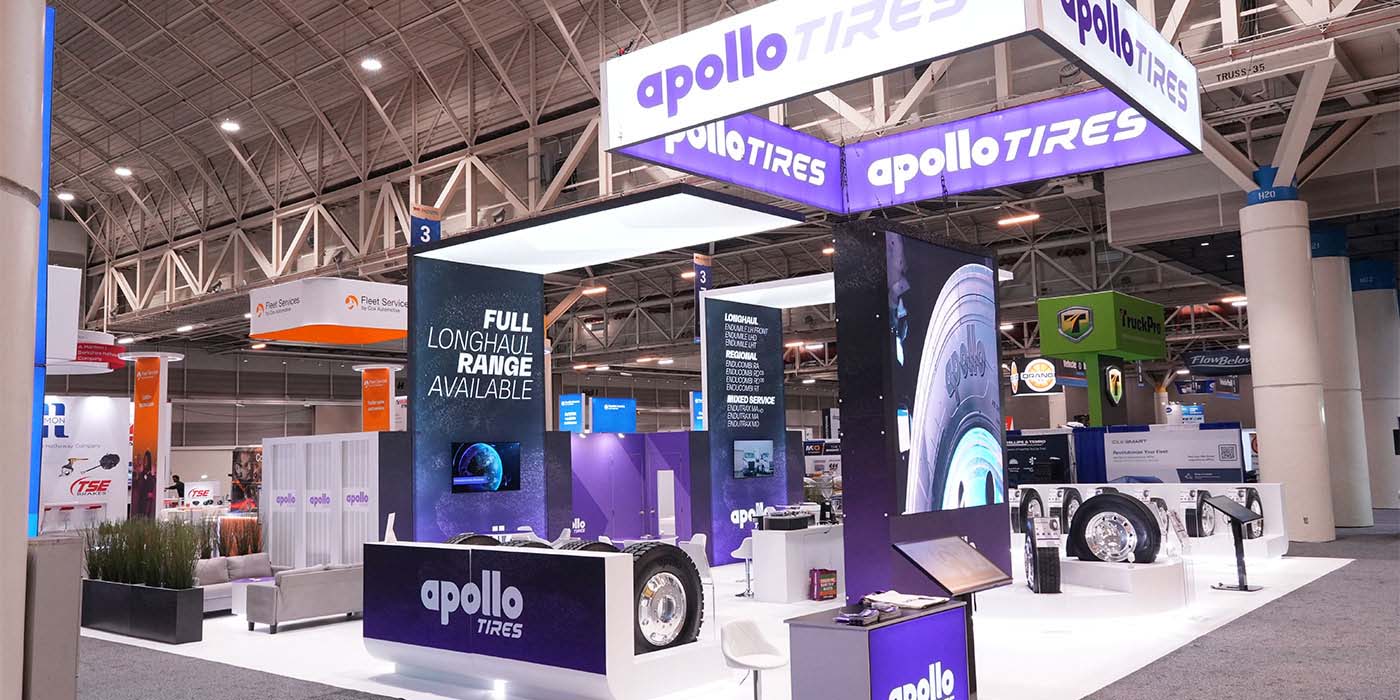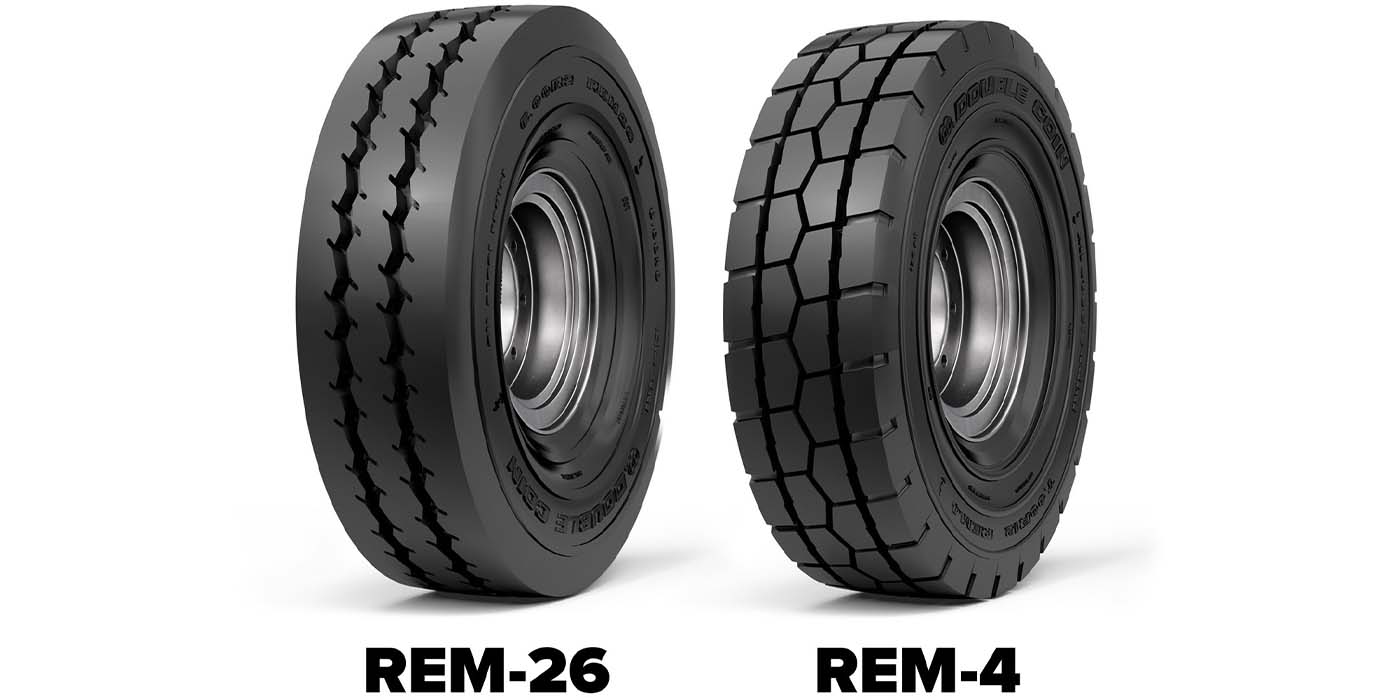No-brainers are sometimes hard to recognize, but manufacturers of truck tire internal balancing materials believe they make a solid case for tire dealers and fleet owners to use their products.
It’s no secret that a balanced tire is a happy tire. Additionally, commercial fleet operators seem pleased with performance reports for rigs outfitted with properly maintained and balanced tires. Consistent tread wear and extended take-off mileage are the most obvious benefits that make the owners smile.
Not so obvious are the paybacks of balancing a tire from inside instead of outside, according to Asa Sharp, trucking industry consultant and spokesperson for Pennsylvania-based International Marketing Inc., which produces and sells Equal Tire Performance.
Equal, the first modern-day internal balancing material introduced to the trucking industry in 1990, is a dry powder designed to continuously balance and dampen vibration levels of commercial truck tires. It is a screen-size ground polymer that won’t absorb moisture or corrode, so it is compatible with the interior surfaces of tires and wheels.
Sharp says there is a confluence of factors that combine to make internal balancing materials more appropriate today than ever before.
“Lead is one of several metals that has been banned in other parts of the world in vehicle manufacturing, so lead has a bull’s-eye painted on it by U.S. environmental groups and the EPA,” he says. “Steel and zinc can replace lead as tire balance weights. The replacement metals have lighter masses, so the average size of clip-on and tape weights are increasing, which impacts the cosmetic appearance of a wheel assembly.”
He notes that another factor is the growing popularity of aluminum wheels in North America’s truck markets. “Clip-on weights do not reliably attach to the thicker aluminum wheels. In addition, aluminum truck wheels are generally not coated, so lead weights create galvanic corrosion at the contact points and creates discoloration.”
Sharp adds that since aluminum wheels are lighter than steel, their radial tires become a larger percentage of the overall wheel assembly weight.
Touting internal balancing materials, he says one of their biggest cost benefits is eliminating the need to rebalance tires at scheduled intervals.
“The average commercial truck drive tire weighs 131 pounds when new,” he explains, “and it loses about 30 pounds of tread by the time it’s pulled for retreading. Even if it wears evenly, a perfectly weight-balanced new tire assembly will become out of balance in its later life.”
Auto-balancing materials eliminate the need to balance truck tires every 30,000 miles, purchase a balancing machine and train an operator. “Considering each tire can be balanced multiple times through two retreadings, an initial $20 to $25 investment for the internal balancing of one tire/wheel assembly is quickly offset,” says Sharp.
Plenty of Savings
Roger LeBlanc, president of Counteract Balancing Beads, points out that fuel savings can be significant when using internal balancing materials. Counteract consists of tempered glass beads created in 7,000F heat and coated with a sealant that can aid its distribution against the inside of a tire.
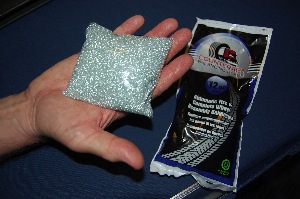
Counteract commissioned Auburn University to run SAE-type fuel economy tests on a fully loaded tractor/trailer rig using its product in all 18 tire/wheel assemblies. “The test demonstrated a 2.2% fuel improvement,” says LeBlanc.
He explains how auto-balancing materials work by referencing natural laws including inertia, which moves the material into a balanced position. “When a tire/wheel assembly starts in motion, any product placed inside a tire will spread itself around. As an unbalanced tire hops, the material is forced to the opposite side of the heavy spot, moving the tire into a balanced state.”
LeBlanc adds that the process works with just about any material, including golf balls, water or sand. However, small particles work better than golf balls, water corrodes wheels and freezes, and sand is much too abrasive.
M&R Tire Products’ marketing manager Ian Savidge says his company’s product, Magnum Plus tire balancing compound, is a collection of “large microbeads” that are 98% round with an anti-static coating to keep them free-flowing.
Savidge says auto-balancing materials extend the life of tires and suggests that the material should be used in all 18 tire/wheel assemblies on a truck. “No one disputes that every tire on a passenger vehicle should be properly balanced. It’s no different for a truck.”
He points out that there is a big benefit on trailers. “There are eight tires back there being damaged by jumping, hopping and scuffing along the roadway. Customers have reported getting 20% to 25% more mileage from their trailer tires. The cargo benefits from a smoother ride, too.”
IMI’s Sharp also lists an improved ride as a benefit provided by Equal, compared to traditional weights. “It works like a shock absorber, acting as a particle damper,” he says. “Vertical accelerometers placed on truck axles indicated a 25% reduction in shock input into the suspension, which translates into an improved ride.”
He cautions that whatever is selected as an internal balancing material for tires, there are specific questions that should be addressed, and these are detailed in a Recommended Practice (RP246) from the ATA’s Technology and Maintenance Council.
“It’s important to know if the product is chemically compatible with the tire, wheel and valve hardware, including TPMS,” says Sharp. “Also, question what happens to the material over time and use. Speed and temperature changes should not impact it.”
“What goes on in a tire dealership when handling the material also needs to be considered,” he says. “Does it impact tire mounting and dismounting, as well as detailed inspection for repair and retread procedures?”
Sharp warns users to be aware of any special requirements, including disposal costs, for removing the auto-balancing product when a tire is dismounted, including toxic material handling procedures.
“The Material Safety Data Sheet provided with the material should be fully reviewed for any hidden dangers or handling issues,” he says. “Also, scrutinize test results intended to substantiate performance claims.
He adds that tire and wheel manufacturers may have clauses that affect their warranties if certain materials are introduced into a tire/wheel assembly. Also, there may be additional inflation or valve system components required, such as filter valve cores.
Why They Buy
One to 16 ounces of internal balancing materials are packaged in serrated lightweight bags, depending on the manufacturer. Placed inside a tire during the mounting process, the bag breaks apart during the first few miles. The bag’s weight is negligible and the material is freed to go to work in the tire.
Unlike a passenger tire, where style, appearance and handling influence the purchase decision, truck tire procurements are mostly based on the bottom-line cost per mile. Purchase decisions boil down to truck owners demanding optimum performance to maintain a competitive advantage. Many unbalanced tires wear out prematurely, directly impacting operating costs.
Accurate data is unavailable, but industry representatives estimate less than 15% of trucks on the highway currently use internal balancing materials. However, a growing number of fleets – small and large – are willing to go on record with testimonials claiming extended tire take-off mileage, better wear patterns, fewer driver complaints, and an improved ride with internal balancing materials.
The conclusion appears to be a real no-brainer: It’s high time to get the lead out.

